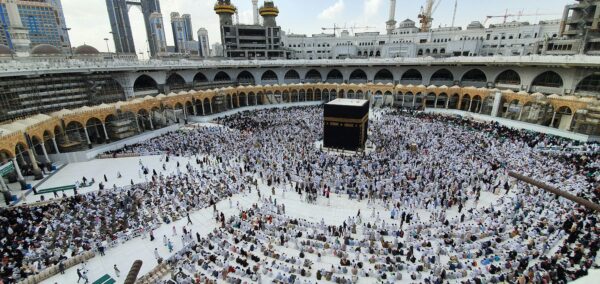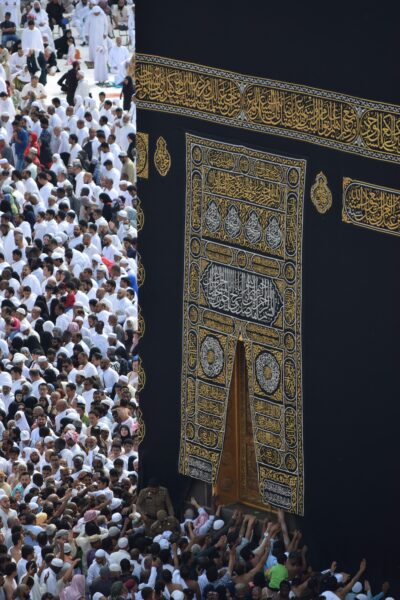Following the Islamic holiday of Eid al-Adha, millions of Muslims around the world made their way to Mecca, Saudi Arabia, as a part of the“Hajj,” a journey of prayer and fulfillment of their religious obligations as Muslims. But for years, climate change has been impacting worshippers. Over 1,300 people have died during the pilgrimage to Islam’s holiest city this year, according to Saudi authorities. Take a look at what Hajj is and what it means for Muslims, along with how climate change poses a particular threat to the millions who go to worship every year.

What is the Hajj?
Hajj, meaning “pilgrimage” in Arabic, takes place in Saudi Arabia, which houses numerous locations holy to Islamic tradition: the city of Mecca, the tent settlement of Mina, and Mount Arafat, among others. The pilgrimage is one of the five pillars of Islam. Under Islamic teaching, every Muslim is expected, if able, to participate in the Hajj at least once in their lifetime as a form of their devotion to God.
A part of this tradition takes place centrally in Mecca, at the holiest mosque (prayer center) in Islam: the Masjid al-Haram. At the center of this site is the Kabba, a black square block covered with woven fabric. This block plays largely a symbolic role as “Beyt Allah,” the House of God. This area is believed to be where the Prophet Abraham was commanded to build a structure in reverence to God. The Kabba in Mecca is the focal point to which all Muslims around the world pray.
Pilgrims circle the Kabba seven times to complete their Hajj and Umrah pilgrimage. This is a ritualistic replication of the origin story of the Kabba: Abraham’s wife Hajar circled the desert seven times in search of water and food for her son, Ishmael. Then, by God’s miracle, water struck the region, which has been memorialized by the structure.

How Many People Embark on the Pilgrimage?
Hajj is one of the largest annual human gatherings in the world. In 2024, Saudi Arabia estimates that over 1.8 million people made their way to Mecca for the sacred pilgrimage, which is consistent with recent years. Certain years experienced much higher numbers: in 2009, for example, 2.3 million pilgrims visited the site, and in 2012, more than three million Muslims made the journey.
What are the Climate Concerns over the Pilgrimage? What are the Overall Climate Concerns in Saudi Arabia?
Saudi Arabia is one of the countries most affected by a warming climate. With the country’s elevated temperatures, those who made the pilgrimage to Mecca are faced with obstacles as the treks to holy sites including the Kabba are mostly all outdoors.
During this year’s pilgrimage, temperatures rose to a record 125 degrees Fahrenheit. The crowds of people making the trip have endured severe heat-related illnesses. On Sunday, June 23, Saudi authorities announced that over 1,300 people died during the five-day event.
Approximately 83% of those deceased were said to be unauthorized pilgrims who walked long distances in these soaring temperatures, almost half of whom were Egyptian; as a result, Egypt has revoked the licenses of 16 travel agencies that facilitated this unapproved travel.
Researchers from Saudi Arabia’s King Abdullah University have estimated temperatures have risen approximately 0.72 degrees Fahrenheit (or 0.4 degrees Celsius) each decade over the past 40 years.
Saudi leadership has recognized this worrying trend. Vision 2030, a governmental plan aimed at diversifying the country economically, culturally, and societally, plans to move the petrol-dependent economy toward sustainable energy production. However, analysts believe that Riyadh can play more than just a domestic role in reducing fossil fuel use. One option is pushing their Gulf neighbors, such as the UAE and Bahrain, as well as developing, oil-producing states like Iraq or Libya, to diversify their economies’ reliance on harmful energy production.
Further Reading:

